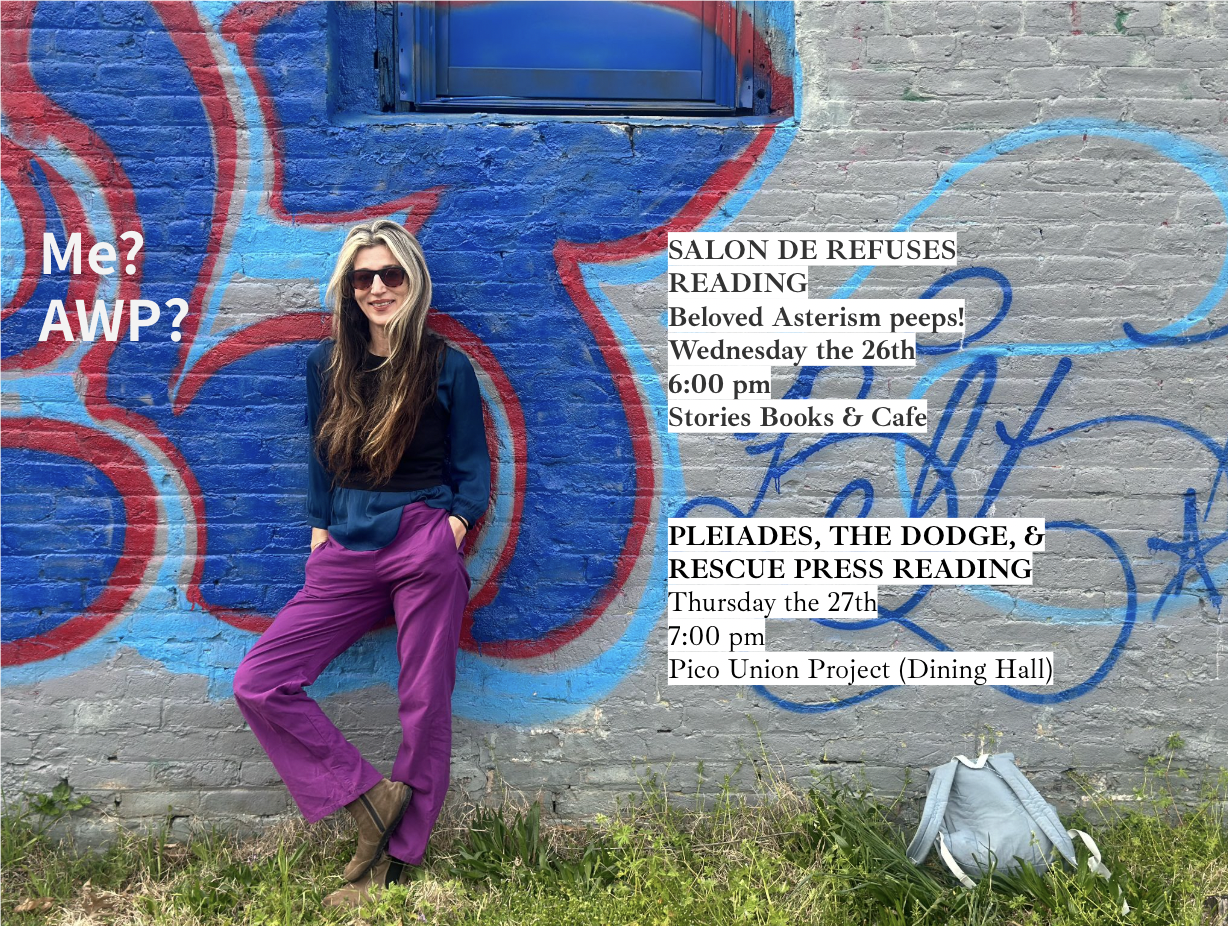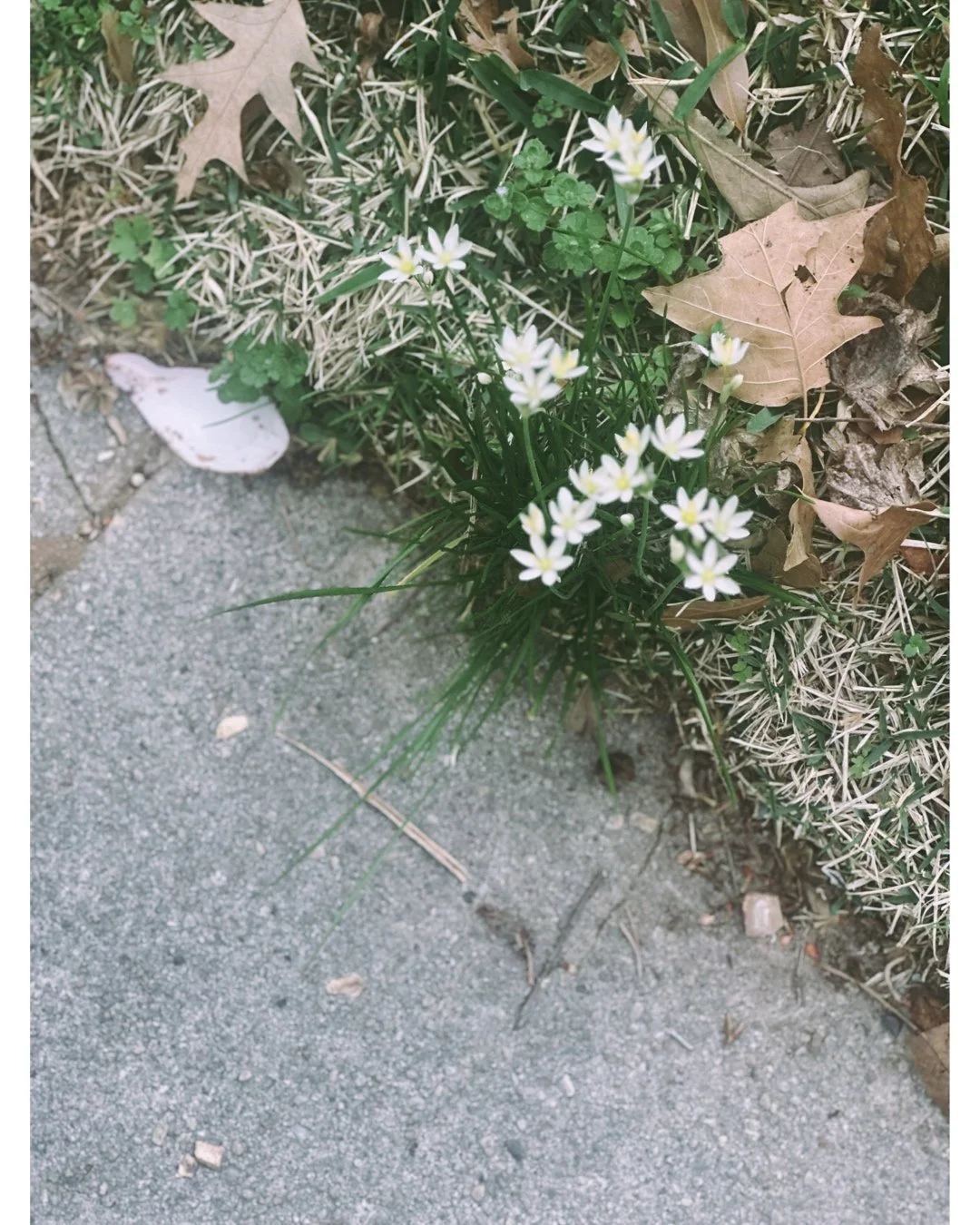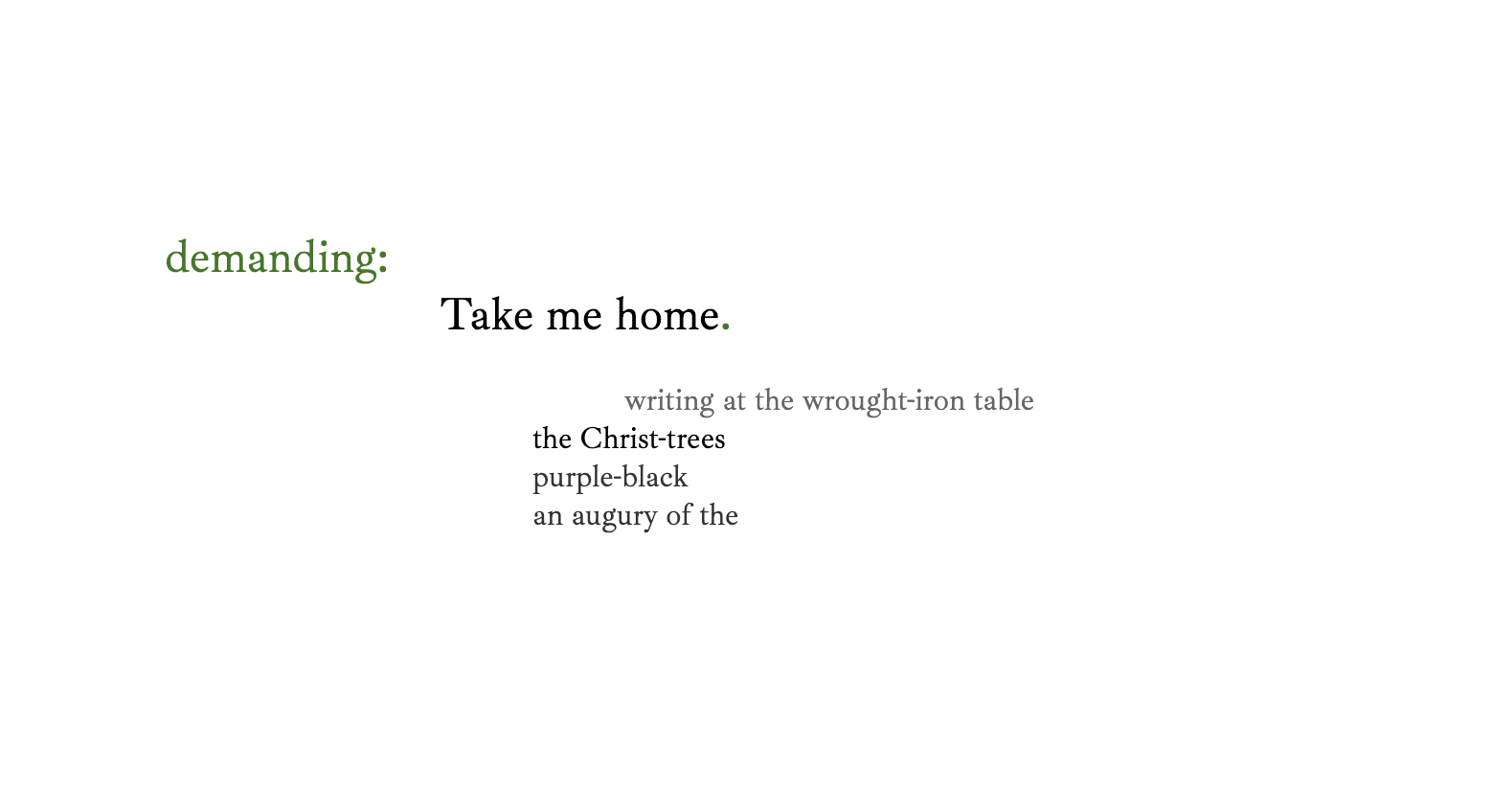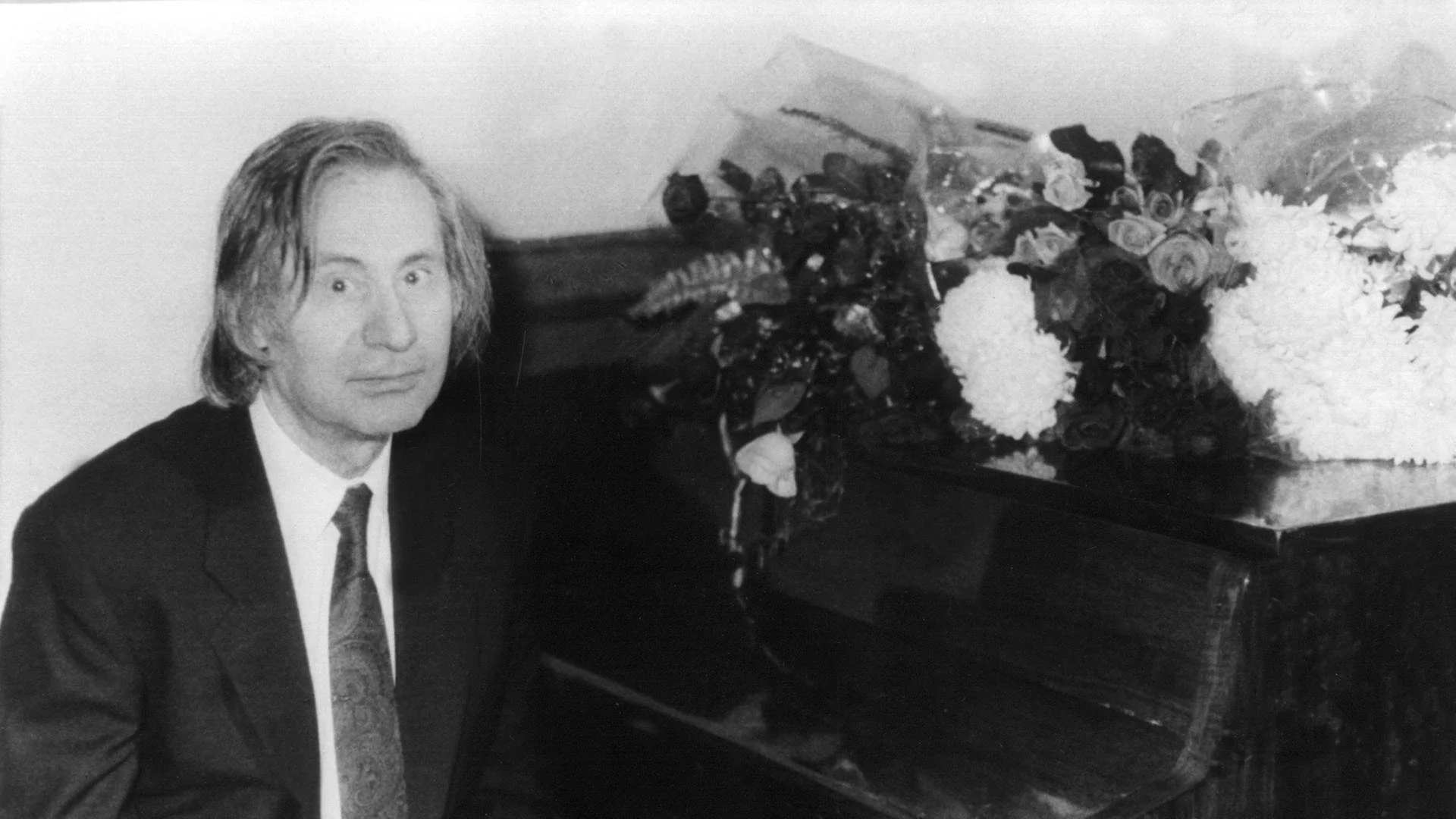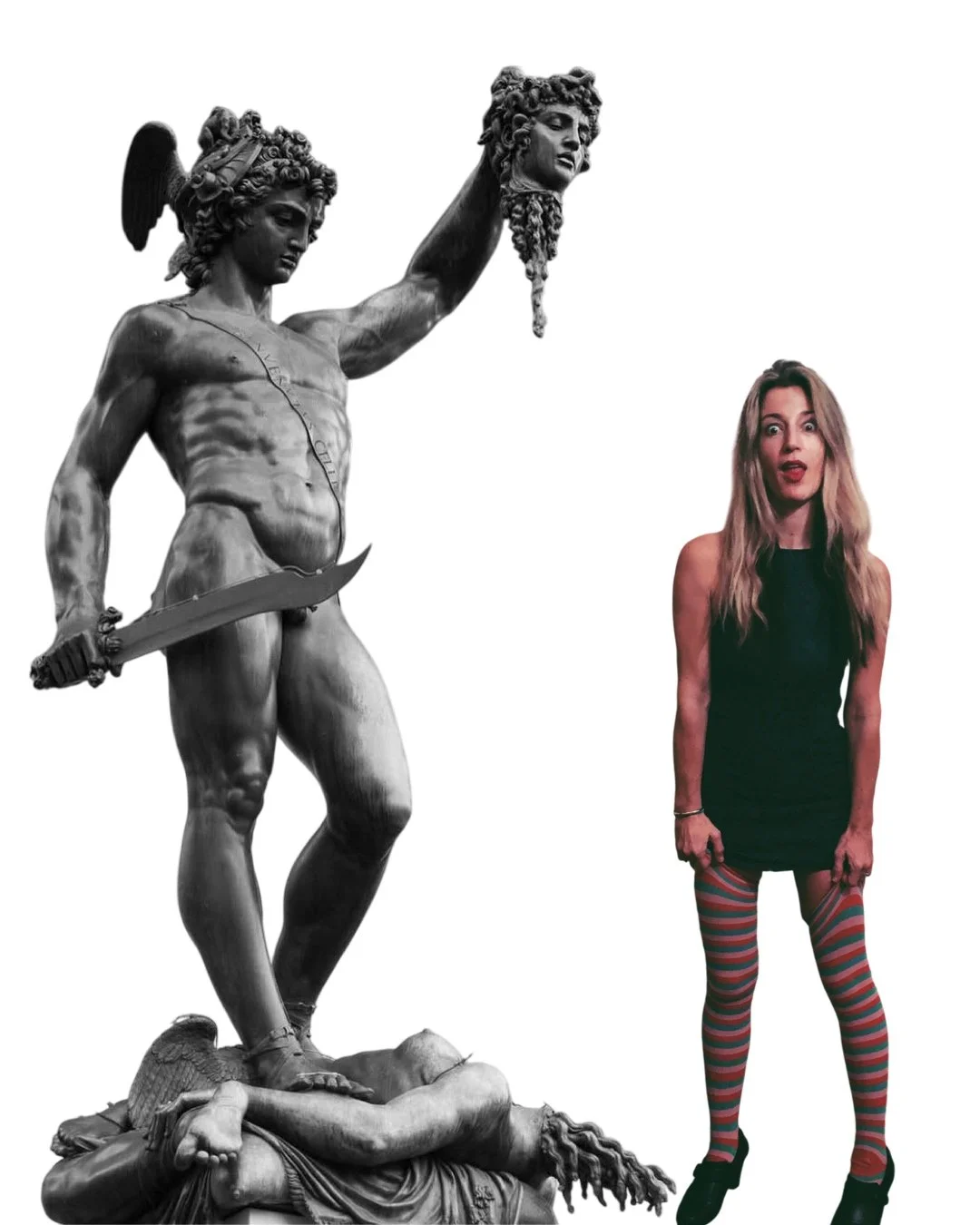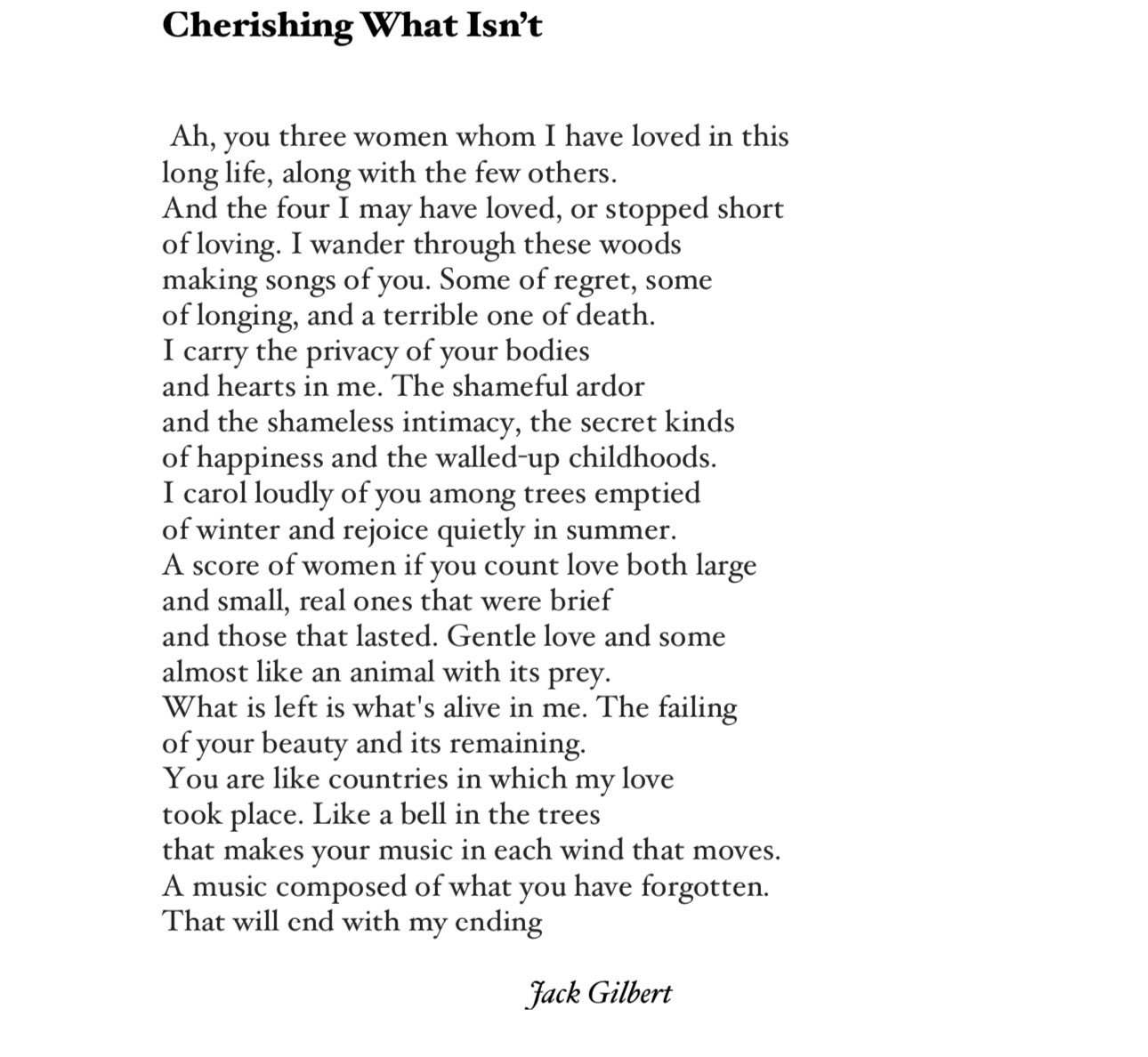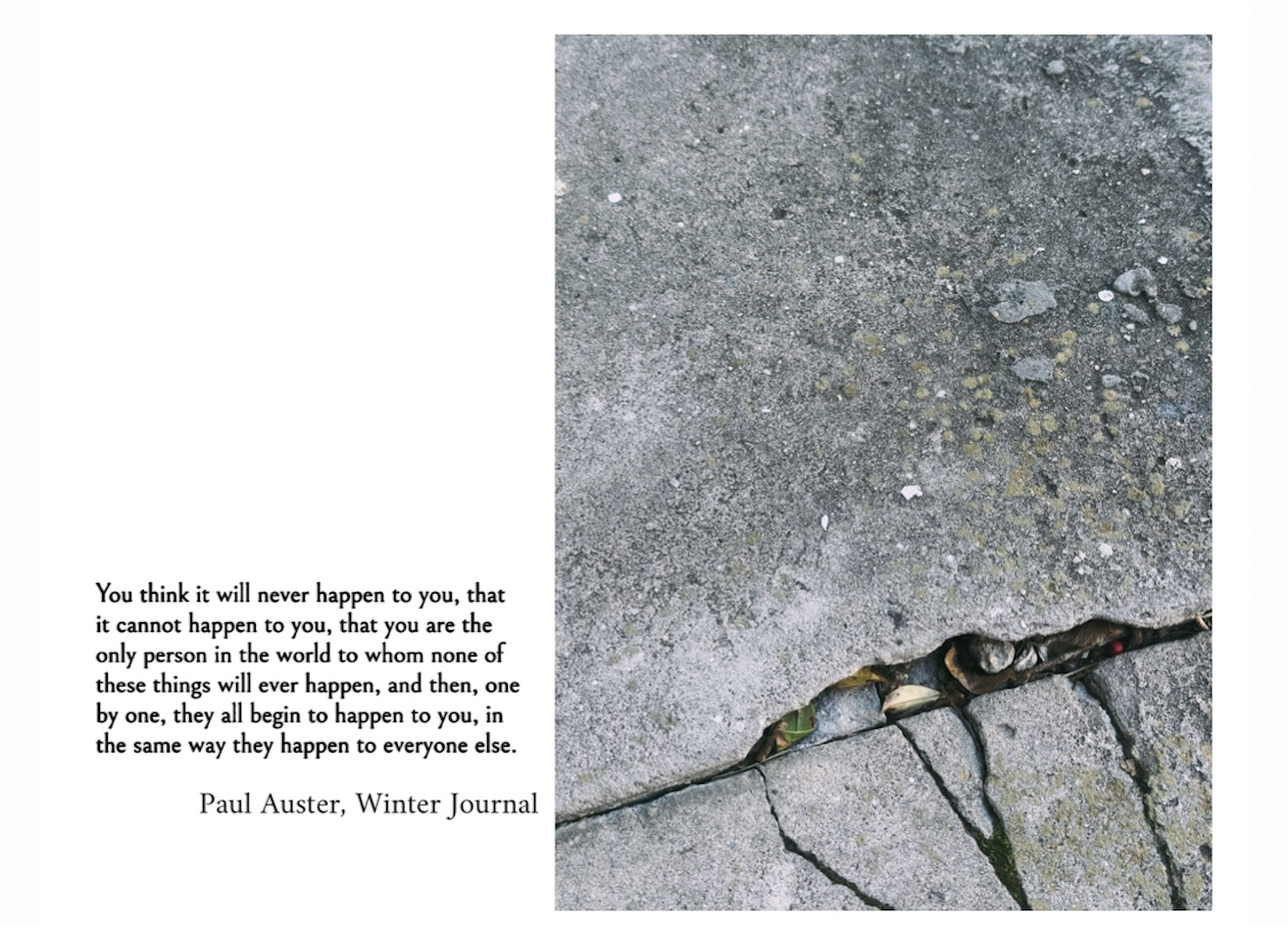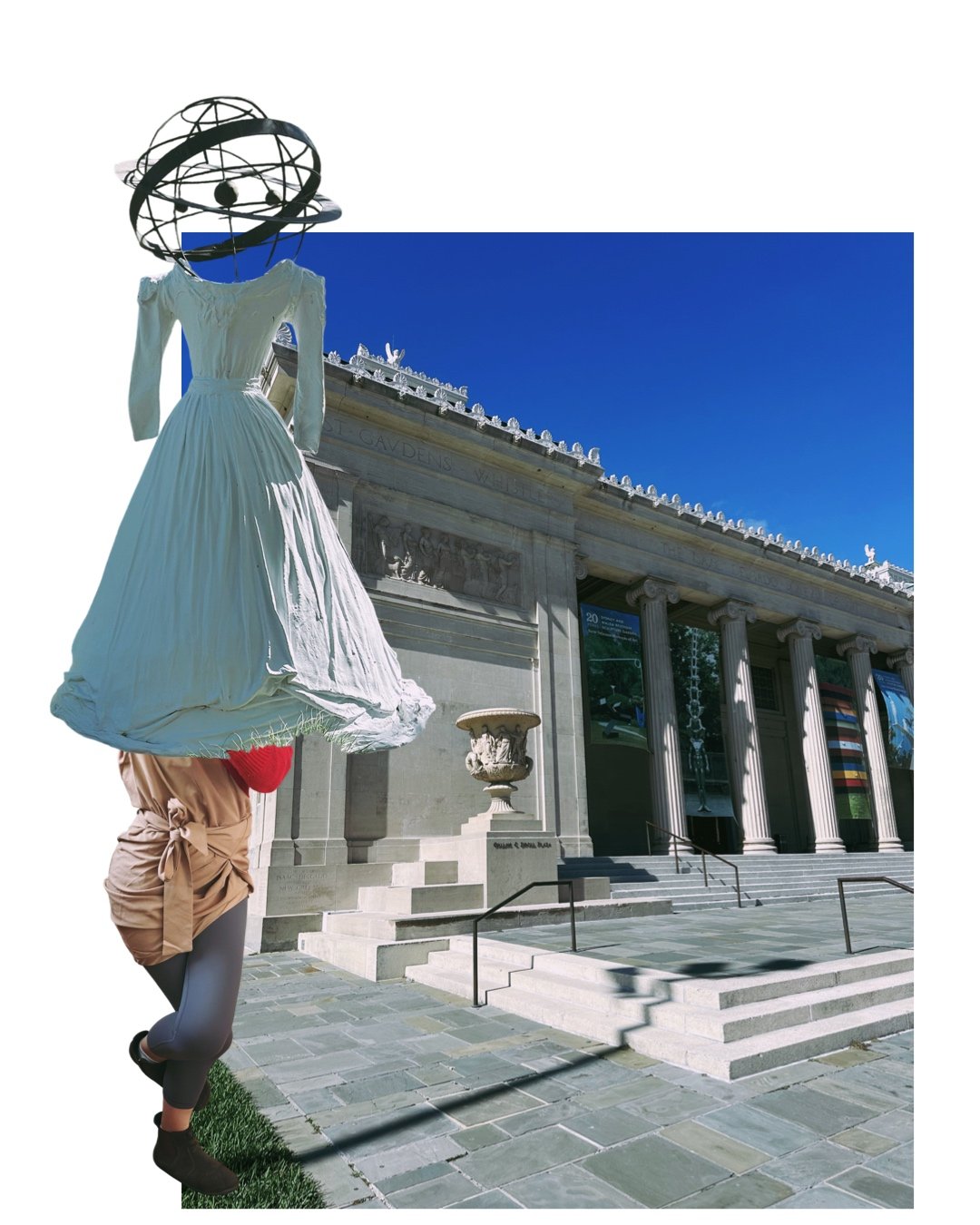HE: So you’re going to Los Angeles next Tuesday?
ME: I am.
HE: Is this one of those writer things where you freak out and do karaoke?
ME: O! It might be!
HE: Ha. The only karaoke song you did really well was “Kiss Me Deadly” at that bar in Maryland…
ME: I thought that was Tennessee?
HE: Maryland. Annapolis. I’m sure of it.
ME: Just admit it’s the best first three lines of a song ever.
HE: If by best you mean cliche as hell and cringe—
ME: I went to a party last Saturday night. Beat. I didn't get laid. Beat. I got in a fight. Beat. Uh-HUH. No beat needed. It ain't no big thing.
HE: You really like that “uh-huh”, eh?
ME: It’s so emblematic of the late 80’s. Billy Idol. Pat Benatar. The strut that led straight into riot grrrl aesthetic.
HE: Are you nervous about AWP?
ME: Very.
“There is an old nursery rhyme that tells of Muhme Rehlen. Because the word Muhme meant nothing to me, this creature became for me a spirit: the Mummerehlen. The misunderstanding disarranged the world for me. But in a good way: it lit up paths to the world’s interior.”
— Walter Benjamin, “The Mummerehlen”
“In Benjamin’s characterization, melancholia is described as an emotional numbness that can increase ‘the distance between the self and the surrounding world to the point of alienation from the body.’”
“Arcades share a genealogy with planetariums, star-gazing architectures, and also with greenhouses.”
“Benjamin was far more attuned to the barbaric side that Engels had glimpsed in his walks around Manchester.”
“First, contemporary ‘poverty of experience’, Benjamin tells us, designates less a yearning for new experiences (Erfahrung) than a liberation from (our constantly having to make) them.”
“Benjamin gives another example of such a misunderstanding: the day after the child had overheard a conversation about a copper engraving (‘Kupferstich’), a concept unknown to him, he stuck his head out from underneath a chair, to enact what he had understood as a ‘head-stickout’ (‘Kopf-verstich’): ‘If, in this way, I distorted both myself and the world, I did only what I had to do to gain a foothold in life.’”
“I wander from ruins to village with my crystal monocle and an unsettling theory of painting. Turn by turn I have been a lionized author, a famous drawer of pornography, and a scandalous Cubist painter. Now I am going to stay at home and let others explain and debate my character in the light of the above particulars.” [Jacques Vaché]
"Engels told me that it was in Paris in 1848, at the Café de la Régence (one of the earliest centers of the Revolution of 1789), that Marx first laid out for him the economic determinism of his materialist theory of history." Paul Lafargue, "Persönliche Erinnerungen an Friedrich Engels," Die neue Zeit, 23, no. [Walter Benjamin, The Arcades Project]
“The intensity is proportionate to the contrast.”
— Joel Sandelson
As one who frequently laughs when reading, alone, I have often wondered if this is something that others do as well. Apparently, laughter is primarily a social behavior, and this is due to frequency, or the fact that humans are much more likely to laugh in the presence of others rather than alone. Laughing alone and whistling in the dark both came to mind when reading a wonderful essay by conductor Joel Sandelson on contrastive valence. “According to psychology, musical emotion is most intense when our evaluation of something switches from negative to positive,” writes Sandelson. “Indeed, the intensity is proportionate to the contrast. Psychologists call this principle ‘contrastive valence’. Judging from the hundreds of millions of views it has since received on YouTube, contrastive valence on a global scale was elicited by the singer Susan Boyle’s first appearance on the TV show Britain’s Got Talent in 2009. The video is a test-case of social stereotyping, and has become a subject of learned academic studies.”
Sandelson then mentions “skin orgasm” as a possible term for music’s physical effect on us— a term that is new to me, and which I imagine landing somewhere between frisson and goosebumps and the Derrida-style shudder— before quickly dismissing it as “a euphemism for something even more fundamental than sexual arousal.” (If I wasn’t shuddering prior, the following three lines are where that begins.) “What is that?” you might ask. And Sandelson replies: “Pattern and anticipation are possible only because humans have a grasp of regular time intervals. Our ability to predict what comes next is linked to the evolution of walking on two feet, to bipedalism. Walking might have taught our brain its sense of time, and time is perhaps the brain’s internal simulation of the periodic motion of footsteps (averaging about one step every several 100 milliseconds). In other words, the first step towards human music happened 4 million years ago when Australopithecines got up on their hind legs and took their first step.”
Time, pattern, anticipation, disappointment—the energy of the fugue. “Although the pleasure provoked by music is intense, the cognitive and affective dimension build meaning into the experience of music in a way that shatters even sex,” Sandelson concludes.
“I only name what I love. I only name what’s worth naming.”
— Roland Barthes, 30 March 1977
There is no reason to believe that it was March 30th when Lichtenberg scribbled the following in his Waste Books: “The ‘second sight’ possessed by the Highlanders in Scotland is actually a foreknowledge of future events. I believe they possess this gift because they don't wear trousers. That is also why in all countries women are more prone to utter prophecies.”
REPRISE (n.): “In music, a reprise is the repetition or reiteration of the opening material later in a composition as occurs in the recapitulation of sonata form, though—originally in the 18th century—was simply any repeated section, such as is indicated by beginning and ending repeat signs.”
In a poem, one line may hide another line,
As at a crossing, one train may hide another train.
That is, if you are waiting to cross
The tracks, wait to do it for one moment at
Least after the first train is gone. And so when you read
Wait until you have read the next line —
Then it is safe to go on reading.
—Kenneth Koch
REPRISAL (n.): an act of retaliation. Historically, a reprisal referred to “the forcible seizure of a foreign subject or their goods as an act of retaliation.”
“Over to the side, near the curtained doorway, my mother stands motionless in her tight bodice. As though attending to a tailor’s dummy, she scrutinizes my velvet suit, which for its part is laden with braid and other trimming and looks like something out of a fashion magazine. I, however, am distorted by similarity by all that surrounds me here. Thus, like a mollusk in its shell, I had my abode in the nineteenth century, which now lies hollow before me like an empty shell. I hold it to my ear.”
— Walter Benjamin, “The Mummerehlen”
